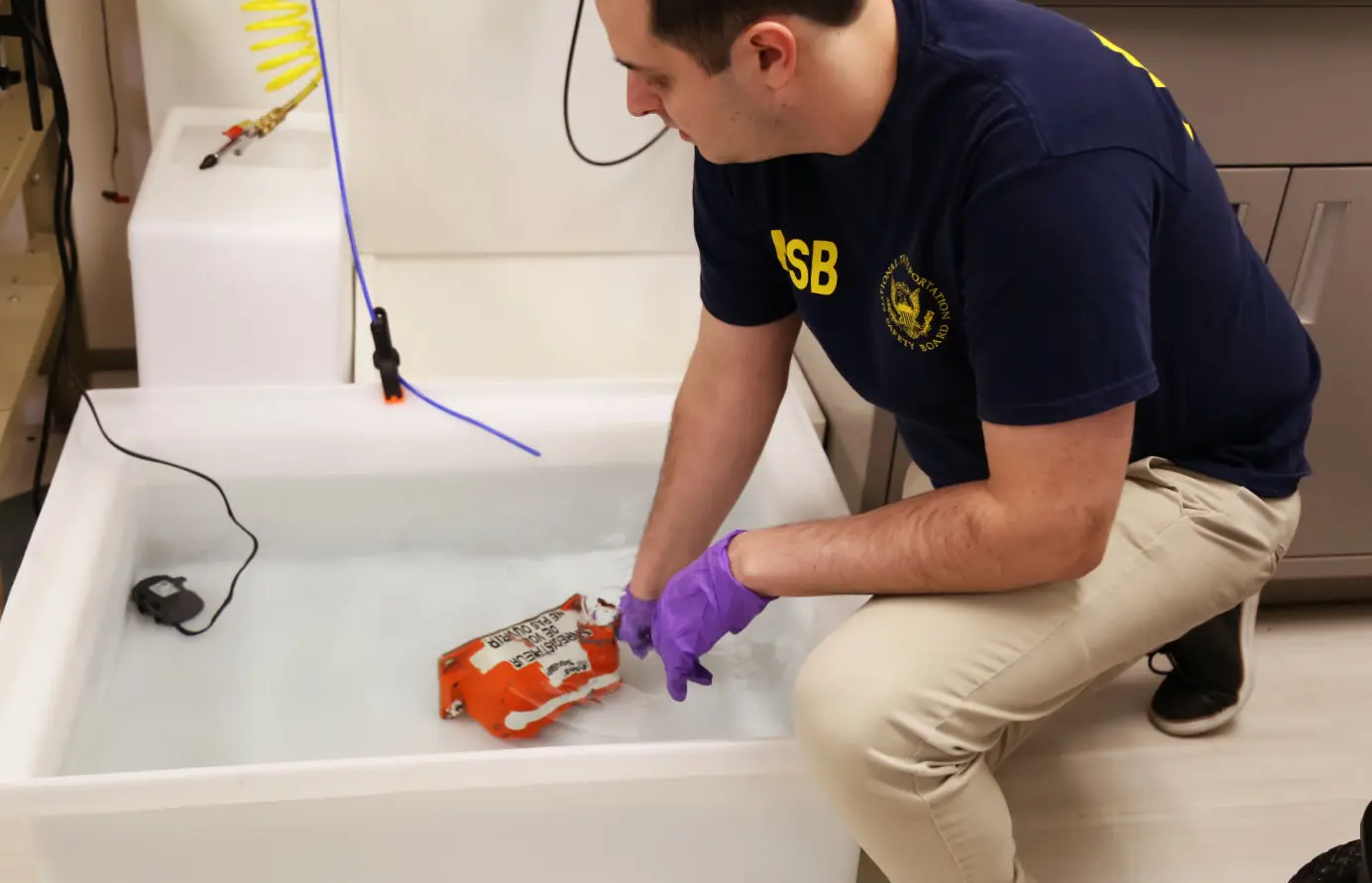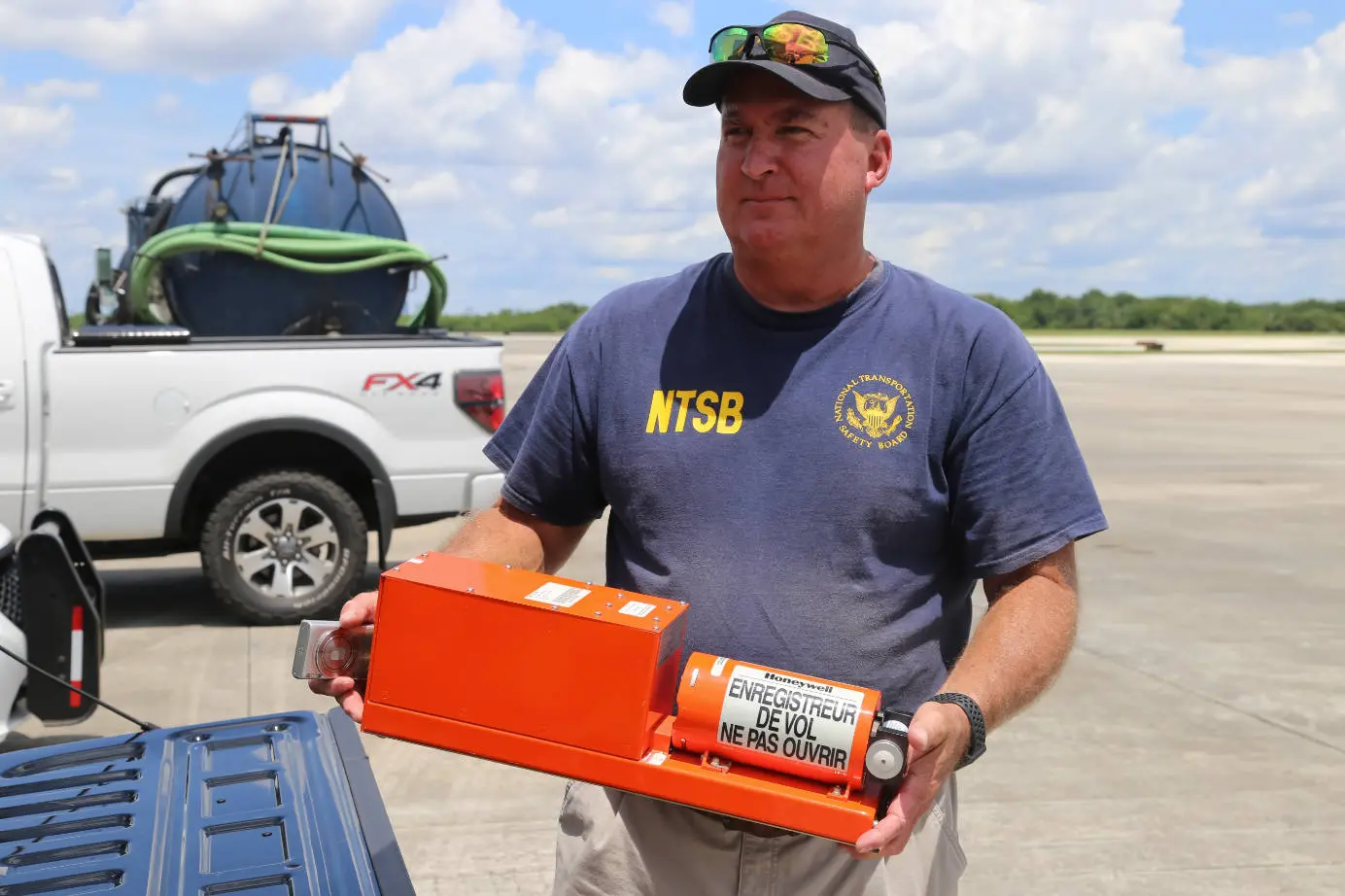
Why Are Black Boxes Kept in Water?
If a plane crashes into the ocean and investigators find its black boxes, they are stored in water tanks until they can be examined further. Learn why.
Table of Contents
When a plane has crashed into the water, and the black boxes are found, investigators often carry the plane's black boxes in water-filled tubs. A question commonly asked is, "Why are black boxes kept in water?"
Black boxes are kept in water because, after an aircraft and its black box have been submerged in a body of water, clean water is needed to keep minerals or salt from drying out inside the black box and causing subsequent damage to the vital information stored inside.
In this article, we will explore not only the normal function of a black box but how this normal function can become damaged and why keeping black boxes in water is essential to prevent this.
Made to Be Tough
A black box is a term used in aviation to refer to a type of device meant to record flight data and cockpit voices on a plane. Collecting and recording this critical information is necessary because this data can provide insight into the causes of a possible plane crash. Black boxes are often the first clue as to what happened.
There are two different types of flight recorders known as "black boxes." One is the "Flight Data Recorder," abbreviated as "FDR," and the other is the "Cockpit Voice Recorder," also shortened to "CVR."
Because of their role, the black boxes (which are actually orange for better visibility) are meant to withstand intense heat, high-impact loads, and water pressure levels.
However, black boxes are susceptible to the corrosion of salt water. Though air travel is, by and large, one of the safest ways to get around the planet, unfortunately, accidents do happen when a plane crashes into the sea.

Because of this, when black boxes are retrieved, it is crucial to counteract the salt water's corrosive properties if the black boxes are going to be able to continue to do their all-important jobs for investigators. Let's take a closer look at that counteracting method below.
Why Are Black Boxes Kept in Water?
After an airplane has crashed and been submerged in salty ocean water, it can take an incredibly long time to find the black box, which is usually the only thing that has managed to survive the crash. After all, the oceans cover most of our planet, and locating the wreckage and data recorders is challenging. For example, it took two years for authorities to find the black box of Air France Flight 447.
Therefore, it may seem strange that when a black box is finally discovered and fished from the ocean, it is dropped right back into a water tank. The question is, why do black boxes need to be kept in the water?
As previously mentioned, the main reason is the super-corrosive abilities of salt water. When investigators find the black boxes, they begin their journey to the National Transportation Safety Board's labs. When this happens, retrieval experts carefully place it in a water tank.

This clean, fresh water keeps any salt and other damaging minerals dissolved in the water rather than allowing them to dry out and crystalize. This way, if any damage to the black box's structural integrity does happen, there is still a chance to save the vital information stored inside as long as the minerals do not dry out inside the device. The process is called reverse osmosis.
Obviously, the black boxes do not remain in their freshwater tub. When it safely arrives at the National Transportation Safety Board lab, technicians remove it and use professional drying procedures to save any information that may be in danger from water exposure.
In Conclusion
To summarize everything we've learned, black boxes are devices mounted in airplanes to record information that may lead to understanding what causes a plane crash if that intense event occurs. Manufacturers design black boxes to handle many conditions and survive until they are retrieved, but salt water can pose a risk to the valuable information black boxes store.
For this reason, retrieval experts and lab technicians usually keep the black box in a cooler of fresh, salt-free water to keep any damaging minerals from drying out in the interior of the black box until investigators can properly dry the device and the data salvaged.
Also read:
Planenerd Newsletter
Join the newsletter to receive the latest updates in your inbox.






